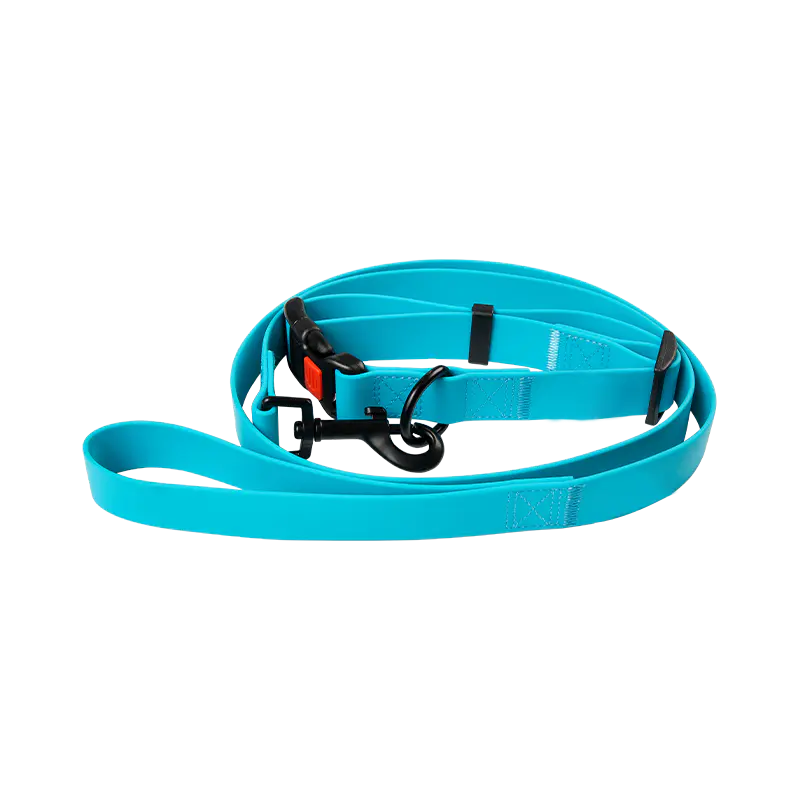High Temperature Resistance Analysis of Waterproof PVC Dog Collar
Waterproof PVC Dog Collar, as a modern pet product, has gradually become a mainstream choice in the pet market with its excellent durability and waterproof performance. Especially in high temperature environments, these collars have shown strong adaptability and service life. This article will discuss in detail the performance of waterproof PVC dog collars in terms of high temperature resistance, including the characteristics of PVC materials, heat-resistant design, thermal stability, advantages in practical applications, and how to deal with hot weather.
1. Characteristics and high temperature resistance of PVC materials
PVC (polyvinyl chloride) is a widely used thermoplastic with high chemical stability, excellent corrosion resistance and strength. Traditional PVC materials usually have good heat resistance, but when the temperature reaches a certain range, PVC may begin to age, become brittle or melt.
When selecting PVC materials, manufacturers of Waterproof PVC Dog Collars pay special attention to their high temperature resistance to ensure that the collars will not be affected by exposure or long-term use in high temperature environments. In order to improve the heat resistance of PVC, modern production processes usually add heat stabilizers, UV absorbers and plasticizers. These chemical components can effectively enhance the heat resistance of PVC, so that it can still maintain good performance in high temperature environments.
2. High temperature resistant design: thermal stability
In high temperature environments, the flexibility of PVC materials may decrease. Traditional PVC collars tend to harden and become brittle at high temperatures, resulting in shortened service life or damage problems. However, waterproof PVC dog collars are usually specially designed and treated, using formulas and materials with higher thermal stability to improve their reliability under high temperature conditions.
High-quality waterproof PVC dog collars will add enhanced stabilizers during their manufacturing process to greatly increase the heat deformation temperature (i.e. the temperature at which the material begins to soften or deform) of the material at high temperatures. This thermal stability treatment can effectively resist continuous high temperature exposure, such as direct sunlight in summer and hot weather in tropical areas. PVC collars that have been treated in this way can remain flexible even when exposed to temperatures above 40°C, without cracking or deformation.
3. Practical application of high temperature resistance
The high temperature resistance of waterproof PVC dog collars is particularly important in practical use. Here are several common application scenarios that show how waterproof PVC dog collars can withstand high temperature environments:
Outdoor activities: Many dog owners like to take their dogs for outdoor activities in the summer, such as hiking, long walks or runs. In particular, the outdoor temperature often reaches above 30°C or even higher. In this case, ordinary cloth collars are prone to mold, discoloration or odor due to moisture absorption or long-term exposure to the sun. The waterproof PVC collar can effectively avoid these problems due to its non-absorbent and high temperature resistant properties. Even if worn for a long time under the scorching sun, the PVC collar will not lose its elasticity or harden due to heat, ensuring the comfort and safety of the dog.
Tropical climate: In tropical areas, the weather is hot all year round, and the temperature often exceeds 40°C. In this high temperature environment, traditional fabric collars are easily soaked by sweat and difficult to dry, resulting in odor, bacterial growth and other problems. The waterproof PVC collar can perfectly cope with this hot and humid climate. The waterproof property of PVC collars prevents liquids such as sweat and rain from penetrating, keeping the collars dry and hygienic. At the same time, its thermal stability ensures that the collars will not age or deform in hot weather.
Car exposure: When leaving a dog in a car, especially in summer, the temperature inside the car tends to rise rapidly, reaching or even exceeding 50°C. Ordinary dog collars can easily soften or melt due to high temperatures in such an environment, causing them to lose their original shape or become unusable. Waterproof PVC dog collars can withstand the challenges of high temperatures in the car. Even if they are exposed to extreme environments in the car for a long time, they can still maintain stable physical properties without deformation or damage.
4. Thermal stability improvement technology
In order to further improve the high temperature resistance of waterproof PVC dog collars, modern PVC materials have introduced some advanced technologies in the production process. The following are some common technical treatment methods:
Heat stabilizer: Heat stabilizer is a chemical additive used to improve the stability of PVC at high temperatures. It can effectively prevent thermal degradation of PVC materials in high temperature environments and maintain their original physical properties. By using high-quality heat stabilizers, waterproof PVC collars can withstand long-term high temperature exposure without significant performance degradation.
Plasticizers: Plasticizers are additives that improve the flexibility and processing properties of PVC, and are often used to improve the softness and adaptability of the material. By using the right amount of plasticizers, waterproof PVC dog collars can maintain their softness and comfort in high temperature environments without becoming hard or brittle.
Ultraviolet absorbers: High-intensity ultraviolet (UV) radiation is one of the main causes of PVC aging. UV absorbers can effectively absorb UV radiation and prevent it from damaging PVC materials, thereby improving the anti-aging ability of waterproof PVC dog collars and extending the service life of the collars.














